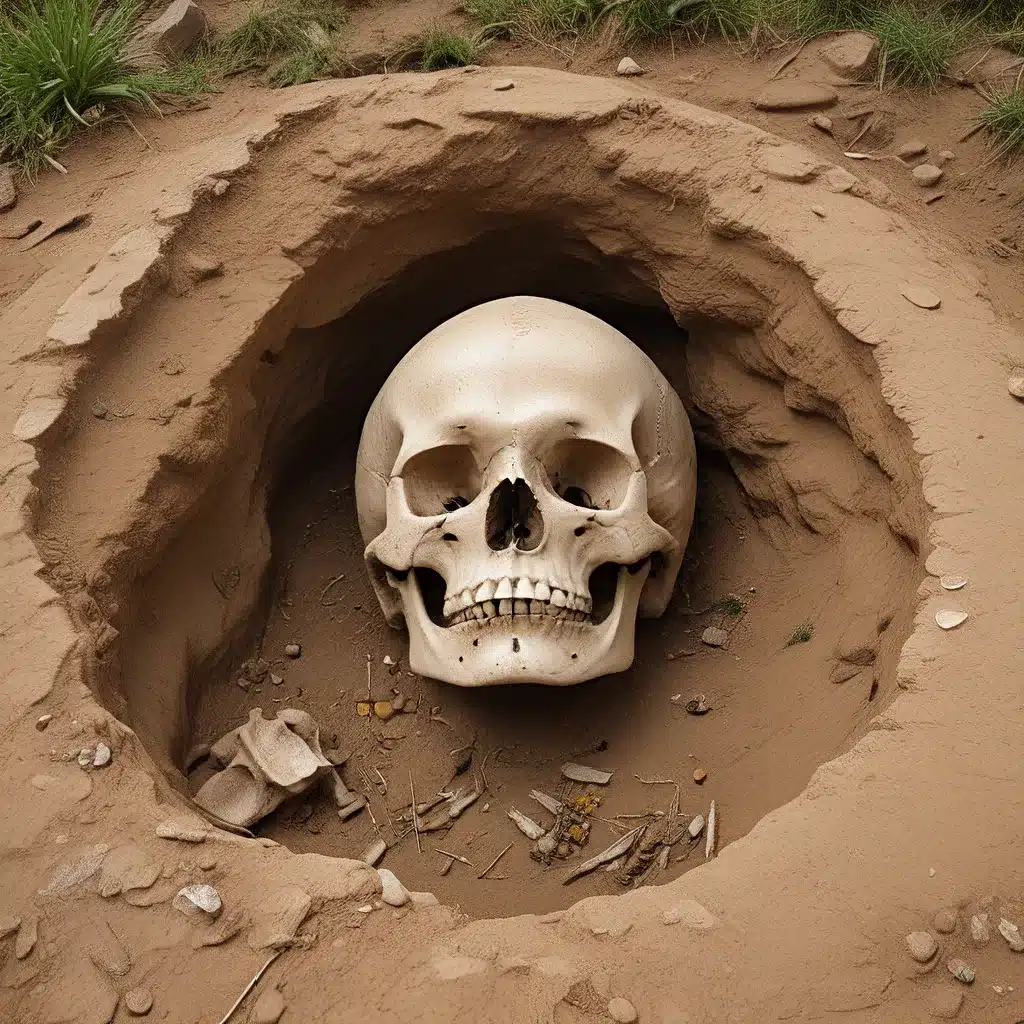
Unveiling the Hidden Meanings Behind Funeral Rites and Commemorative Traditions
Throughout history, the rituals and practices surrounding death and burial have played a crucial role in shaping the cultural identity and belief systems of ancient civilizations. From the elaborate funerary customs of the ancient Greeks to the enigmatic burial mounds of the Scythians, the methods by which societies honored their departed speak volumes about their values, social structures, and conceptions of the afterlife.
The ancient Greek conception of the afterlife and the associated ceremonies were well-established by the sixth century BC. As described in Homer’s Odyssey, the Underworld was a somber realm where the shades of the dead drifted endlessly, a far cry from the vibrant world of the living. The Greeks believed that at the moment of death, the psyche or spirit of the deceased would leave the body as a “little breath or puff of wind.”
The burial rituals were a crucial part of this transition, ensuring the proper sendoff of the departed and maintaining the balance between the worlds of the living and the dead. These rituals typically consisted of three stages: the prothesis (laying out of the body), the ekphora (funeral procession), and the interment of the body or cremated remains. Elaborate funerary monuments, ranging from monumental earth mounds to ornate marble stelae, were often erected to mark the graves and commemorate the deceased, ensuring their continued remembrance by the living.
Exploring the Performative Aspects of Ancient Burial Practices
Beyond the practical aspects of preparing the deceased for the afterlife, ancient burial rites also took on a highly performative nature, blurring the lines between ritual, theatre, and personal expression. As scholar Mario Erasmo has noted, the staging of death rituals in ancient Rome and Greece can be seen as a form of “participatory theatre,” where the audience becomes an active participant in the commemorative process.
This performative quality is evident in various literary depictions of ancient funerals, such as the accounts of Julius Caesar’s elaborate funeral in the works of Suetonius and Appian. These narratives highlight the metatheatricality and theatricalization of death rituals, where the social construct of the funeral is reimagined as a stage for political and social maneuvering.
Similarly, the Troades of the Roman playwright Seneca exemplifies the blurring of boundaries between dramatic spectacle and funerary commemoration. By recasting the audience as participants in the death ritual, Seneca challenges traditional theatrical paradigms and invites the reader to engage with the performative aspects of mourning and remembrance.
Cremation and the Transformation of the Dead
The treatment of the deceased’s physical remains also played a crucial role in the symbolic and narrative significance of ancient burial practices. The practice of cremation, in particular, was imbued with a range of transformative meanings and associations.
In the Aeneid, Virgil’s depiction of the cremation of Pallas contrasts the bucolic eroticism of the ritual with the conventional evocations of Roman funeral rites. Similarly, in Ovid’s Metamorphoses, numerous references to cremation rituals are used to link the fall of Troy with the rise of Rome, as well as to contribute to the creative process and reading experience of the epic.
The transformation of the dead through cremation and the subsequent dispersal of their ashes became a powerful literary trope, one that challenged the readers’ understanding of the finality of death and the boundaries between the mortal and divine realms.
Epitaphs and the Animated Dead
The epigraphic record of ancient funerary monuments, from simple inscriptions to elaborate epitaphs, further illuminates the ways in which the dead were commemorated and integrated into the cultural memory of the living. These epitaphs served as textual and emotional markers, encoding shared elements of the narrative funerary landscape and transforming the reading process into a ritualized experience.
As Erasmo observes, the animation of the dead through their figurative self-representation in elegiac texts highlights the reciprocity between epitaphs and poetic texts, as well as the reciprocal communication between the living and the dead. The physical context and figurative setting of these commemorative inscriptions became a rich source of meaning, challenging the limits of commemoration and self-representation.
Uncovering the Significance of Ancient Burial Practices
The study of ancient burial rituals and funerary practices offers a unique window into the worldviews, cultural values, and social structures of long-vanished civilizations. By delving into the performative aspects of these rituals, the symbolic meanings of cremation, and the epigraphic commemoration of the dead, we can gain a deeper understanding of the ways in which ancient societies grappled with the fundamental questions of mortality, the afterlife, and the enduring legacy of the human experience.
As we continue to uncover and interpret the archaeological evidence and literary depictions of these ancient burial customs, we can better appreciate the rich tapestry of human history and the timeless human need to honor and remember the departed. This exploration of the rituals of the ancient Greeks, Romans, and other cultures not only illuminates the past but also provides insight into the enduring significance of death and commemoration in the human experience.
The Lost Kingdoms invites you to join us on this captivating journey through the hidden meanings and profound cultural impact of ancient burial practices, as we seek to decipher the rituals that have shaped our understanding of the human story.


